To say that the world of newspaper journalism has changed since I began my career at the Chicago Tribune last century would be a demonstrable understatement.
Newspapers today are barely recognizable when contrasted to the five highly competitive and spirited dailies that covered Chicago 50 years ago.
The Chicago Sun-Times, Chicago Daily News, Chicago Today, Chicago Defender, and the Chicago Tribune were print newspapers, not the online, digitally focused content platforms of today.
When you read newspapers produced on mammoth printing presses, you held them in your hands. You might have gotten a little printer’s ink on your fingers, but you never had to worry about losing your Internet connection.
There was no Internet! Content platforms were loading docks, where bundles of newspapers were stacked onto trucks and delivered to people’s homes and businesses or thousands of newsstands throughout the city.

Bird cages never had it so good. And neither did the millions of Chicagoans who read one or two of those five dailies.
Those readers got skillful and predominantly unbiased reporting along with inspired writing.
And you got it all for about 25 cents—a dollar on Sunday.
Those halcyon days of traditional newspaper journalism didn’t last. The digital revolution drove thousands of print newspapers out of business, and the ones that have survived and remained are merely pale shadows of their former selves.
When I started my career at the Tribune, the daily print circulation was almost 800,000, and Sunday circulation was about 1.3 million. Today, the daily print circulation of the Tribune is barely 73,000, while digital subscriptions are about 400,000.
Do I lament the demise of print newspapers? Sure I do. But I also know that when it comes to technological advancements you adapt or you die.
When the telephone became ubiquitous in the late 19th and early 20th centuries, newspapers quickly adapted. Many stories could be reported by telephone instead of sending reporters out of the office.
Newspapers took advantage of the advent of nationwide radio in the 1920s, and when television emerged in the late 1940s and early 1950s, newspaper newsrooms were brimming with TV sets. Both technologies were adopted as reportorial tools by newspapers, even though both revealed a hard truth to newspaper publishers. Newspapers could not compete with the speed that radio and television brought to the news business.
For decades, newspapers held their own against radio and television by offering more complete and in-depth coverage of issues.
Then, along came The Internet.
Since the 1980s, some newspapers have made a valiant effort to adapt to the realities of the Internet and the digitation of information by creating online cyber-versions of themselves. Many did not.
Creating e-versions of themselves has kept newspapers marginally relevant—at least for the time being. Meanwhile, the print product has declined precipitously.
I still get a newspaper thrown onto my driveway seven days a week, but I also access the online versions of that newspaper and four others.
But I would be lying if I didn’t tell you that the print version of that newspaper is nowhere near as well produced, reported, written, and edited as it was 30 years ago.
All of which causes me to wax nostalgic about the Chicago Tribune where I spent almost 30 years of my life.
For example, seven years ago, the Chicago Tribune shocked Chicago when it vacated Tribune Tower. Constructed in 1925, the 36-story Gothic tower was an iconic fixture on the northern edge of Chicago’s “Magnificent Mile” at 435 North Michigan Avenue.
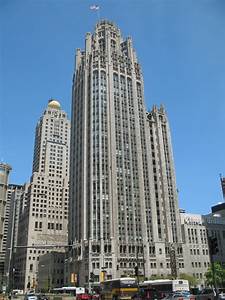
I am one of an ever-dwindling band of former Chicago Tribune reporters, photographers, and editors who actually toiled in the “old” Tribune newsroom.
I can recall my heart hammering when I entered the Tribune Tower’s cavernous lobby on my first day as a general assignment reporter. I had been hired just days after graduating from the William Allen White School of Journalism at the University of Kansas—an unheard-of opportunity the Tribune seldom granted newly minted journalism school graduates.
Naturally, I was determined to show everybody that I belonged in this embodiment of renowned and legendary Chicago newspaperdom. When I walked into the yawning fourth-floor newsroom on my first day, I have to admit I was (input an appropriate adjective here) overwhelmed, stupefied, staggered, dumbfounded, flummoxed.
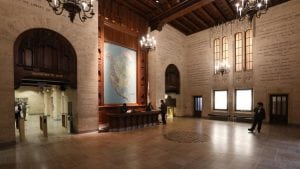
If the lobby was daunting, the Tribune’s newsroom was even more intimidating and overwhelming.
The place was humungous. It was also louder than the “clatter wheels of hell,” as my grandpa used to say. Telephones were ringing, people were yelling, typewriters were clacking, telex machines were dinging and clanging, copy boys and girls were scurrying, and above it all, I could hear my heart pounding like a bass drum in my ears.

God, what have I gotten myself into? I wondered.
Of course, I didn’t start my life at the Tribune in that outsized grotto of the fourth estate. No, not by a long shot. Instead, as were all rookie reporters in those days, I was assigned to something called “Neighborhood News” in a much quieter and less imposing area of the tower.
But nine months later, after I proved that I could write intelligible and accurate stories about the lesser regions of the Chicago Metropolitan area, I was hurled into the reportorial breach and found myself ensconced at an ancient battleship gray wooden desk shared by several reporters.
In those days, new general assignment reporters “hot desked it,” meaning you sat at a vacant desk as long as some old-timer sporting a fedora and smoking a big stogie didn’t tell you to move. Yes, boys and girls, back then, the Tribune City Room was saturated with cigarette and cigar smoke. And sometimes, the drawers on those old wooden desks contained half-full bottles of Old Grandad or Wild Turkey. Ah, yes, it was a very different time.
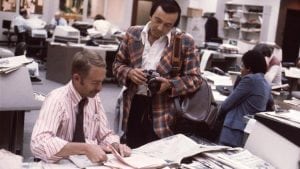
But I digress. Before me on that scuffed and gouged wooden desk rested a big black steel Underwood typewriter. I was sure the damned thing was just daring me to write something on it.
I could almost hear it saying, “Go ahead, ya big Kansas hick. Write somethin.’ I dare ya!”

I’m sure I gulped several times, watching the turbulent activity in front of me with reporters running in and out of the newsroom amid a discordant symphony of ringing telephones.
I wondered how long before I would be one of those reporters. My heart pounded. My palms sweated. My mouth parched.
I didn’t have to wait long. I heard somebody shouting my name from about thirty feet across the room.
“Yates, Yates,” the voice barked.
I snapped to attention, just like I did on my first day of U.S. Army basic training at Ft. Leonard Wood, Missouri, when a rock-solid staff sergeant with a tan campaign hat covering his square, close-cropped head called my name.
Only this voice didn’t come from a drill sergeant. It emanated from a medium-height bespectacled man in shirtsleeves sitting in the driver’s seat of the Tribune’s horseshoe-shaped City Desk. He was flanked on both sides by a squad of rewrite men (not many women back then), a photo assignment editor and a bank of squawking radios blaring raspy police and fire department calls. A couple of the grizzled rewrite men even wore (you guessed it!) green eye shades.
The man impatiently calling my name was the Chicago Tribune’s Day City Editor. His name was Don Agrella.
I looked over at him just in time to hear him yell. “Yates, take an obit.” I looked down at the black telephone on my desk just as it started ringing.
“An obit?” I found myself thinking. “Geez, what a start!”
“Hello,” the voice on the other end said, “this is Weinstein’s Funeral Home on West Devon. Are you ready?”
“No, I’m not dead yet,” I quipped, thinking I was being uproariously waggish.
The voice on the other end of the phone wasn’t amused.
“Okay, NOW are you quite ready?”
My response was appropriately sheepish. “Sorry. It’s my first day.”
I looked around the newsroom. No one was paying attention. I was relieved. But I was also thankful to be even a tiny cog in that enormous, churning throng of reportorial humanity.
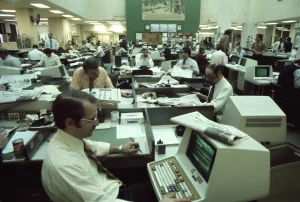
By the end of the day, after writing, I don’t know how many obits I decided I would earn my journalistic spurs in Tribune Tower or die trying.
I can’t imagine working as a Tribune reporter anywhere but Tribune Tower.
That is not the case today. After the newspaper left the Tribune building, it moved into the Prudential Building across the Chicago River. Then, in January 2021, the Tribune moved again—this time into the paper’s Freedom Center printing plant at 777 W. Chicago Ave.
Inside the Freedom Center were 10 colossal Goss Metroliner offset presses producing close to a million copies of the Tribune and several other newspapers, including the Sun-Times, every day.
In my wildest imaginings, I never thought I would see the day when the Tribune would be printing its number one competitor. But such is today’s newspaper world.
Adapt or die.
In 2024, the Freedom Center closed, and the Tribune moved its main office to 160 N. Stetson Avenue, Suite 400, Chicago, IL 60601. And that’s where the paper resides today.
That means neither of Chicago’s two remaining major dailies has newsrooms in the city’s immediate downtown area. The Chicago Sun-Times, which had been at 350 N. Orleans St., relocated to 30 N. Racine Ave. on the Near West Side in 2017.
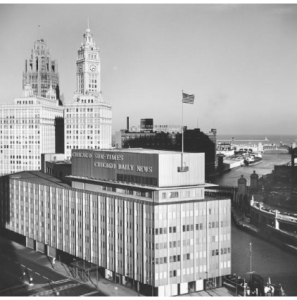
There is no way I can talk about the Chicago Tribune abandoning Tribune Tower without talking about the man who, in my mind, will always personify it.
That man was Don Agrella, who I consider “a City Editor Extraordinaire.”
OK, right off the bat, I will tell you Don Agrella would have blasphemed if I ever referred to him with such a genteel handle.
But the fact is, Agrella, who passed away at 92 in 2011, was an extraordinary Day City Editor and Chicago newsman. For about five years, he was my boss at the Tribune. Between 1969 and 1974, I worked for him as a general assignment reporter, rewriteman, and assistant city editor. During those five years, he provided me with a newspaper education that no longer exists.
Agrella’s trademark in the newsroom was to assign reporters to stories by yelling: “Hat and Coat!” as in, “Yates, hat and coat!”
Never mind that neither I nor any other reporters my age in the early 1970s ever wore a hat.
Nevertheless, when I heard those words, that was my cue to sprint over to the Tribune’s city desk where Agrella would issue my marching orders: “Go cover this (fill in the blank) speech, fire, trial, meeting, press conference, etc., and let me know if it’s worth anything.”
Only once during my budding career as a general assignment reporter for the Tribune did I dare return and declare: “It wasn’t worth a story.”
“Is that right?” Agrella replied. “Well then, why in the hell does the Sun-Times have a story and what about this City News Bureau copy I am holding?”
All I could do was gulp. “Sorry,” I said. “I didn’t think it was worth a story.”
Agrella pointed at an empty chair next to him.
“Sit down here a minute.” Then, leaning forward, he said: “In the future, you go cover the story, call me, and I’ll decide if it’s worth anything. That way, you won’t have to apologize anymore.”
Then, noticing that my 6’4″ frame seemed to be sinking into the newsroom floor, he took pity on me.
“Look, it’s my job to decide if something is worth a story. It’s your job to report. OK? Let me do my job.”
Then he smiled. “Now go and write me a 4-head.” (In Tribune newsroom parlance, a “4-head” was a short, 3-paragraph story that usually wound up somewhere in the back of the paper). I went back to my desk and wrote what was (in my mind at least) the best 4-head story Agrella had ever seen.
Another peculiar expression I heard for the first time at the Tribune was “muskox.”
You might assume that the word referred to the shaggy-haired, hoofed mammal native to the Arctic tundra that belongs to the same family as the buffalo. You would be only half wrong.

A muskox was the term editors used for a Sunday feature story.
How, you might ask, did that happen? Sometime in the 1930s or 1940s, legendary Tribune publisher Col. Robert R. McCormick read an article about how the native peoples of the Arctic region use muskoxen. For example, non-migratory muskoxen have large amounts of dense fur and layers of fat that keep them warm in the coldest weather. For thousands of years, native peoples have used muskoxen fur, fat, and meat to survive the harsh Arctic winters.
“I think somebody should write a story about these animals,” the Colonel suggested to the Tribune’s managing editor. When Col. McCormick “suggested” a story, it was deemed a command. As you might expect, some unwary reporter was immediately assigned to produce a “reader” about muskoxen for the Sunday Tribune.
From that moment forward, any Sunday story the colonel “suggested” or an editor assigned was called a “muskox.”
The first “muskox” I was assigned to write was a 600-word story about a Chicago teen who was abducted by a witch from California. Where else?
But I digress. As I mentioned, the Tribune newsroom in the early 1970s was alive with sound. No cubicles. No cell phones. No computers. No carpeted floors. Just lots of noise—as in the clacking of typewriters, telephones ringing off their hooks, editors yelling at reporters, and reporters yelling “copy” at copy boys (and girls).
In those days, yelling “copy” didn’t mean going to the Xerox machine to make a copy. It meant: “Hey copy boy (or girl), get over here and pick up this story I just finished and distribute it to all the relevant editors.”

Back then, we wrote stories on 10-page thick “books” that were cranked through typewriters. You had to pummel the keys so that the carbon paper in between those ten pages could produce nine legible yellow copies of your story that could then be distributed to and read by the plethora of relevant editors scattered throughout the newsroom.
That was high-tech back then, as was the extensive system of vacuum tubes used to send stories to other parts of the building, such as the composing room or some editor’s office.
Newsrooms five decades ago were studies in semi-controlled mayhem. How anybody ever worked in them, let alone wrote anything of quality, baffles me today. But the work we did and the stories produced were damned good ones too.
Don Agrella saw to that. He was a tough taskmaster. He did not suffer fools, nor did he tolerate sloppy reporting.
“You sure about this, Yates?” he once asked about an exclusive story I had just put before him.
“I am,” I replied.
“Would you bet your mother’s life on it?”
“I would,” I said with nary a hesitation.
“OK,” he replied. “But don’t forget, you only have one mother, but there are a million stories out there.”
I have to admit, that gave me pause. But on I soldiered.
“Damn it, Don, it’s a good story.”
“I didn’t say it wasn’t good. But is it accurate?” he demanded.
Accuracy was at the top of Don Agrella’s list of reportorial essentials. He might accept a poorly written story (he could always have a rewrite man or woman rework it), but God forbid it be inaccurate. Or filled with the reporter’s opinions or biases.
One thing you learned early on in dealing with Don Agrella is that you never lied to him. Don wanted to trust his reporters, and if he couldn’t take you at your word, you were on bad paper with him. I witnessed a few reporters fall into that trap, and few, if any, ever climbed out of it and into Don’s good graces again.
Between 1973 and 1974, I became a City Editor myself. I was the weekend version of Don Agrella, assigning reporters to stories on Saturday and Sunday and putting together a local report. I am sure I could never have done that job had I not had the experience of watching Don Agrella at work.
In 1974, after a year of wheedling, I was promoted to Foreign Correspondent and went off to Tokyo as the Tribune’s Chief Far Eastern Correspondent.
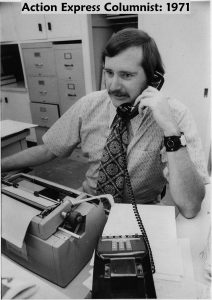
It was the reason I had come to the Tribune. Becoming a foreign correspondent was my dream job. But, as was the case with most Tribune reporters who wanted to become foreign correspondents, you had to prove yourself to the powers that be.
That meant you had to be able to write any kind of story—from crime, politics, and disaster to compelling feature stories, profiles, and commentaries. These were the things I learned during my five years as a general assignment reporter. You also had to know the Tribune’s audience, and most of all, you had to be a self-starter with an “eye” for a story.
The foreign desk did not want foreign correspondents who had to be told what to do, where a story was, or how to report and write it. The bottom line for any foreign correspondent was trust. Tribune editors had to have a lot of trust in you before they sent you off at great expense to cover the world.
After I left for Tokyo in 1974, I never worked for Don Agrella again, but one day in May 1975, when I returned to Chicago for a few days after covering the fall of Saigon in April, Don grabbed me and took me aside.
“You did a great job covering Vietnam,” he told me. “And just so you know, the Sun-Times and the Daily News never had a story you didn’t have. It looks like you learned something in my city room, after all, Yates.”
Beating the competition was enormously important–even for a foreign correspondent.
A few years later, when I was based in Los Angeles for the Tribune, I met with actor Ed Asner, who at the time was playing the part of Lou Grant, City Editor of the fictional Los Angeles Tribune. It was 1978, and Lou Grant was one of the top TV shows in America.
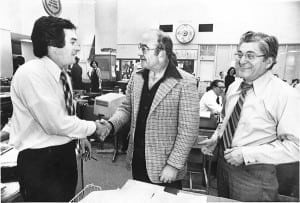
Asner asked me if I thought his portrayal of a tough city editor was accurate. I told him he should go to Chicago and watch Don Agrella at work. He did that, and one day, when Don wasn’t expecting it, Asner walked into the Tribune newsroom and yelled, “Agrella, Hat and Coat!”
I wish I could have seen that. I’m sure Don thought it was a hoot. When Asner asked Metro Editor Bernie Judge if his portrayal of Lou Grant was accurate, Judge responded: “Yeah, but your telephone doesn’t ring enough.”
When Don retired from the Tribune in 1979, it was unquestionably the end of an era. He was an old-school newspaperman leaving when the business was on the verge of changing in ways that saddened many veteran hacks like me.
Once in the early 1990s, a gang of us Agrella disciples and Don gathered for lunch at Ricardo’s Restaurant (once known as the Montmartre of the Midwest and a classic hangout for Chicago news hacks).
Don was in town from Florida, where he had retired. I had just returned to Chicago from my second posting in Tokyo.
“Well, Don,” I asked. “Are you ready to come back to the Tribune city room?”
“What city room?” he replied. “The place looks like an insurance office. I couldn’t work there. There’s no noise.”
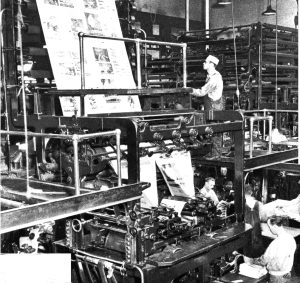
I realize today that I was one of the lucky ones. I got to work in a big city newspaper newsroom with its clamor and clatter and its palpable turmoil and tension. I can still recall the muffled grumble and the shuddering of the newsroom floor when the enormous banks of presses cranked up in Tribune Tower six levels below the newsroom.
When those presses began to roll, it was the high point of the day because on those presses was the culmination of a day’s hard work by a legion of highly dedicated and talented people.
Yes, I was one of the lucky ones. Not only did I get to work in a noisy, dynamic newsroom, but I also got to work for Don Agrella, a City Editor who was, without a doubt, “Extraordinaire.”
Sorry, Don.
–30–
If you enjoyed this post, please consider subscribing to ForeignCorrespondent and tell your friends to subscribe. IT’S FREE! WHAT A DEAL! If you’ve received this from a friend and would like to be added to our distribution list for future blog posts, please enter your email address in the sign-up in the notifications box at:
https://ronaldyatesbooks.com/category/foreign-correspondent.
You can also find my commentaries on Substack at https://ronyates.substack.com/ and the American Free News Network at https://afnn.us.
Please feel free to comment. WE LOVE COMMENTS!

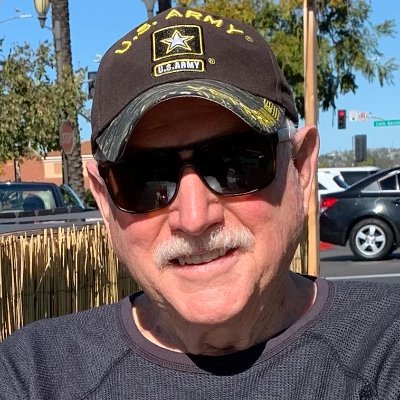
That kind of testimony to a person’s worth is rare to see. You were, and still are, truly blessed!
Thanks, Joe. I can’t complain. I had so much fun during my newspaper days, I always felt like I was stealing money.